Dimitri Galayko
CIC: Circular Image Compression
Jul 18, 2024



Abstract:Learned image compression (LIC) is currently the cutting-edge method. However, the inherent difference between testing and training images of LIC results in performance degradation to some extent. Especially for out-of-sample, out-of-distribution, or out-of-domain testing images, the performance of LIC dramatically degraded. Classical LIC is a serial image compression (SIC) approach that utilizes an open-loop architecture with serial encoding and decoding units. Nevertheless, according to the theory of automatic control, a closed-loop architecture holds the potential to improve the dynamic and static performance of LIC. Therefore, a circular image compression (CIC) approach with closed-loop encoding and decoding elements is proposed to minimize the gap between testing and training images and upgrade the capability of LIC. The proposed CIC establishes a nonlinear loop equation and proves that steady-state error between reconstructed and original images is close to zero by Talor series expansion. The proposed CIC method possesses the property of Post-Training and plug-and-play which can be built on any existing advanced SIC methods. Experimental results on five public image compression datasets demonstrate that the proposed CIC outperforms five open-source state-of-the-art competing SIC algorithms in reconstruction capacity. Experimental results further show that the proposed method is suitable for out-of-sample testing images with dark backgrounds, sharp edges, high contrast, grid shapes, or complex patterns.
CMISR: Circular Medical Image Super-Resolution
Aug 15, 2023Abstract:Classical methods of medical image super-resolution (MISR) utilize open-loop architecture with implicit under-resolution (UR) unit and explicit super-resolution (SR) unit. The UR unit can always be given, assumed, or estimated, while the SR unit is elaborately designed according to various SR algorithms. The closed-loop feedback mechanism is widely employed in current MISR approaches and can efficiently improve their performance. The feedback mechanism may be divided into two categories: local and global feedback. Therefore, this paper proposes a global feedback-based closed-cycle framework, circular MISR (CMISR), with unambiguous UR and SR elements. Mathematical model and closed-loop equation of CMISR are built. Mathematical proof with Taylor-series approximation indicates that CMISR has zero recovery error in steady-state. In addition, CMISR holds plug-and-play characteristic which can be established on any existing MISR algorithms. Five CMISR algorithms are respectively proposed based on the state-of-the-art open-loop MISR algorithms. Experimental results with three scale factors and on three open medical image datasets show that CMISR is superior to MISR in reconstruction performance and is particularly suited to medical images with strong edges or intense contrast.
CSwin2SR: Circular Swin2SR for Compressed Image Super-Resolution
Jan 20, 2023Abstract:Closed-loop negative feedback mechanism is extensively utilized in automatic control systems and brings about extraordinary dynamic and static performance. In order to further improve the reconstruction capability of current methods of compressed image super-resolution, a circular Swin2SR (CSwin2SR) approach is proposed. The CSwin2SR contains a serial Swin2SR for initial super-resolution reestablishment and circular Swin2SR for enhanced super-resolution reestablishment. Simulated experimental results show that the proposed CSwin2SR dramatically outperforms the classical Swin2SR in the capacity of super-resolution recovery. On DIV2K test and valid datasets, the average increment of PSNR is greater than 1dB and the related average increment of SSIM is greater than 0.006.
ICRICS: Iterative Compensation Recovery for Image Compressive Sensing
Jul 19, 2022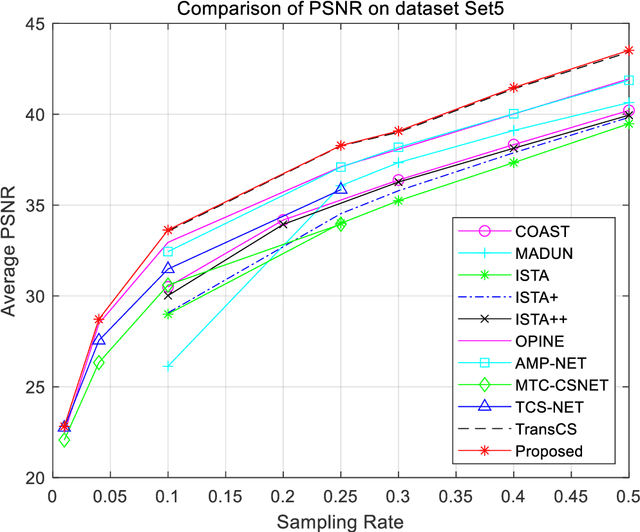
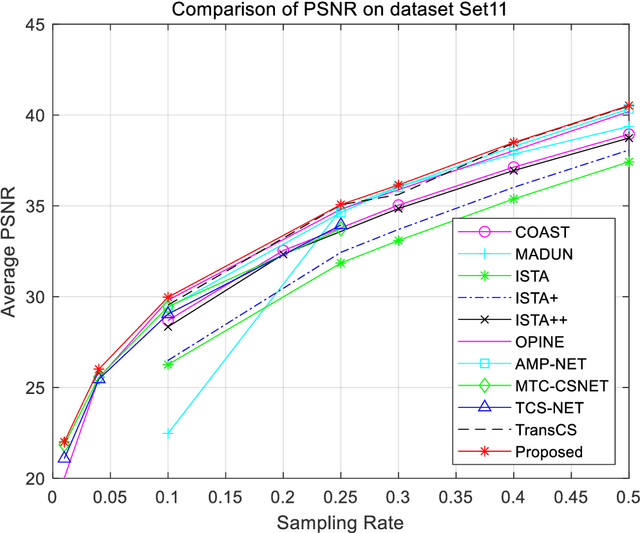
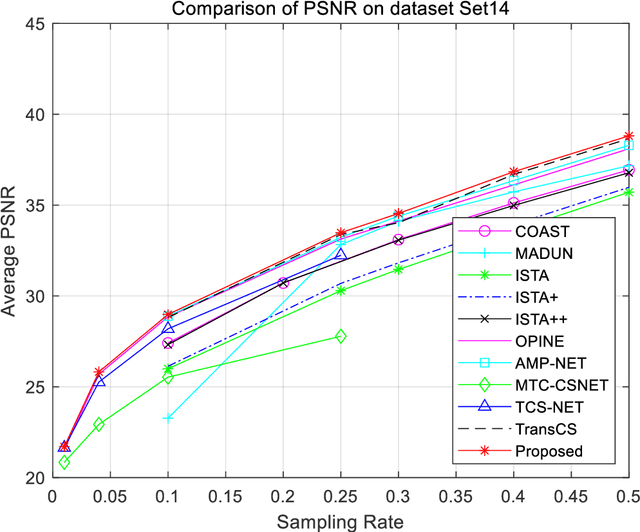
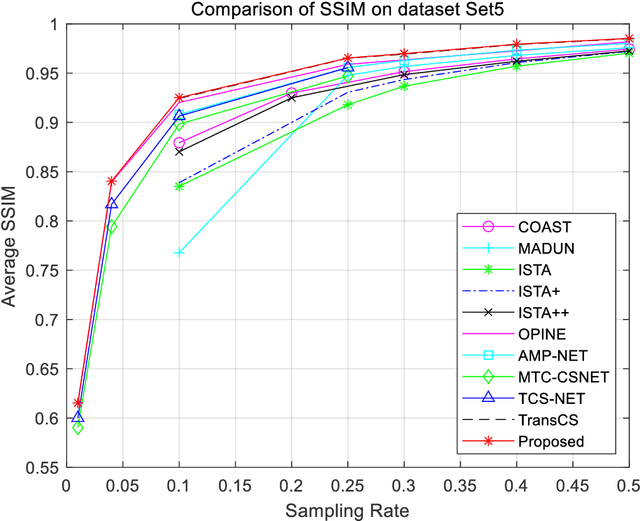
Abstract:Closed-loop architecture is widely utilized in automatic control systems and attain distinguished performance. However, classical compressive sensing systems employ open-loop architecture with separated sampling and reconstruction units. Therefore, a method of iterative compensation recovery for image compressive sensing (ICRICS) is proposed by introducing closed-loop framework into traditional compresses sensing systems. The proposed method depends on any existing approaches and upgrades their reconstruction performance by adding negative feedback structure. Theory analysis on negative feedback of compressive sensing systems is performed. An approximate mathematical proof of the effectiveness of the proposed method is also provided. Simulation experiments on more than 3 image datasets show that the proposed method is superior to 10 competition approaches in reconstruction performance. The maximum increment of average peak signal-to-noise ratio is 4.36 dB and the maximum increment of average structural similarity is 0.034 on one dataset. The proposed method based on negative feedback mechanism can efficiently correct the recovery error in the existing systems of image compressive sensing.
Cascade Decoders-Based Autoencoders for Image Reconstruction
Jun 29, 2021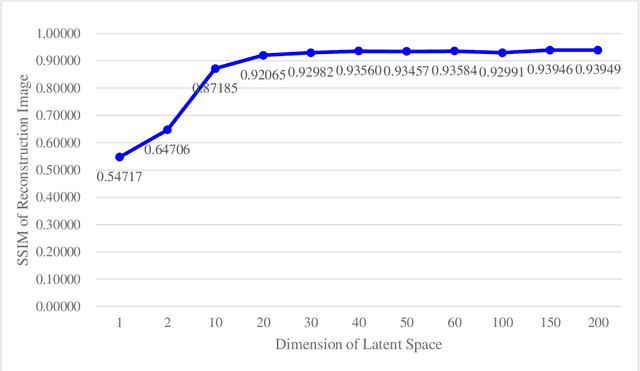
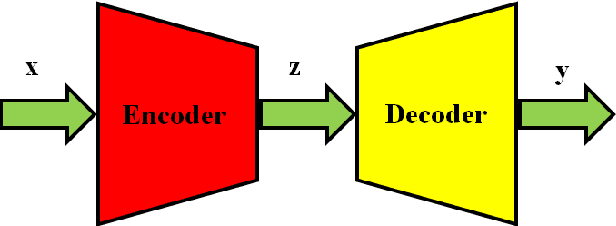

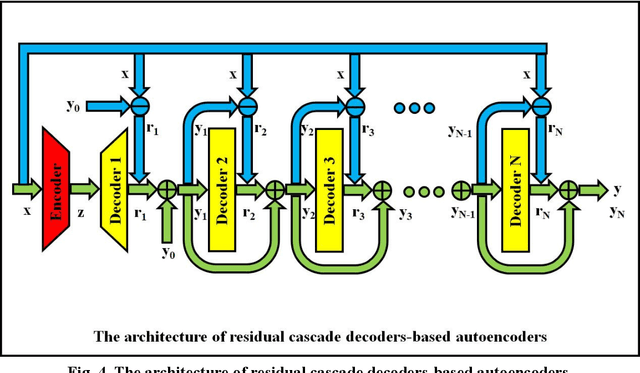
Abstract:Autoencoders are composed of coding and decoding units, hence they hold the inherent potential of high-performance data compression and signal compressed sensing. The main disadvantages of current autoencoders comprise the following several aspects: the research objective is not data reconstruction but feature representation; the performance evaluation of data recovery is neglected; it is hard to achieve lossless data reconstruction by pure autoencoders, even by pure deep learning. This paper aims for image reconstruction of autoencoders, employs cascade decoders-based autoencoders, perfects the performance of image reconstruction, approaches gradually lossless image recovery, and provides solid theory and application basis for autoencoders-based image compression and compressed sensing. The proposed serial decoders-based autoencoders include the architectures of multi-level decoders and the related optimization algorithms. The cascade decoders consist of general decoders, residual decoders, adversarial decoders and their combinations. It is evaluated by the experimental results that the proposed autoencoders outperform the classical autoencoders in the performance of image reconstruction.
 Add to Chrome
Add to Chrome Add to Firefox
Add to Firefox Add to Edge
Add to Edge